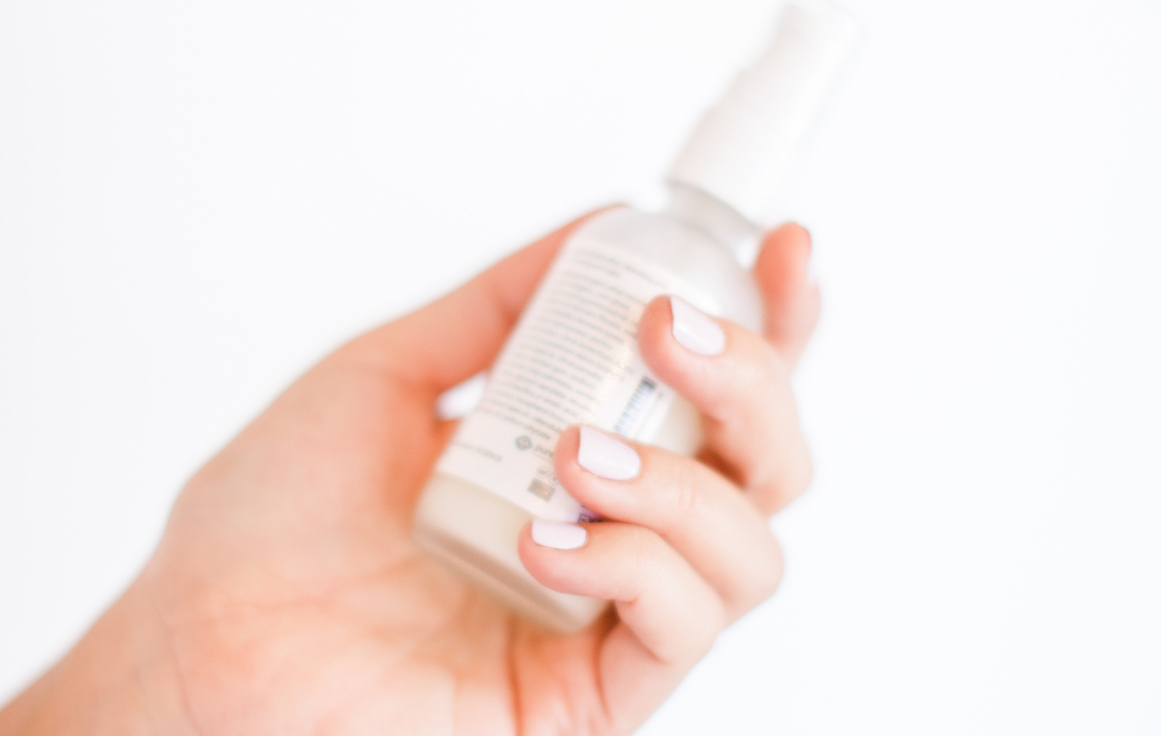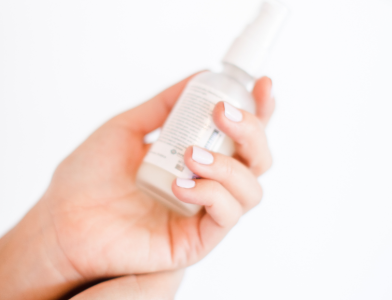If you heat up leftovers or snacks in the microwave, especially in plastic containers, you’re not alone. Most families rely on microwave cooking for its speed and convenience. But did you know this everyday habit might be exposing your body to hidden hormone-disrupting chemicals, microplastics, and even carcinogens? The good news: you can dramatically reduce your toxic exposure with just a few simple changes. Let’s look at what really happens when you microwave food – and how you can take charge of your health today.
Why Microwaving in Plastic Is Risky
Many people trust containers labeled “microwave safe.” But contrary to popular belief, this label only means the plastic won’t melt or warp – it says nothing about chemicals leaching into your food.
Recent studies show that microwaving plastic containers releases billions of microplastics and nanoplastics into your meal in just a few minutes. These tiny particles don’t change the taste or smell of your food, but they do enter your body. Researchers have found microplastics in human lungs, bloodstream, organs, and even the brain.
Why is this a concern? Microplastics can trigger your immune system, increase oxidative stress, and carry endocrine-disrupting chemicals like phthalates and bisphenols – linked to problems such as infertility, thyroid dysfunction, metabolic issues, developmental delays in children, and cancer.
Cumulative Chemical Exposures: The Real Issue
These exposures aren’t a one-time event. Chronic, low-level exposure to microplastics and chemicals adds up over time, stacking the odds against your long-term health. The daily repetition is where risk accumulates, especially for children who are still developing.
While this may sound concerning, it’s empowering to know how easy it is to fix.
Simple Swaps for Safer Microwaving
The easiest move you can make is to swap out plastic for glass or ceramic when microwaving food. Glass does not leach chemicals, is stable, and safe for reheating. Popular brands like Pyrex, Anchor Hocking, and IKEA offer affordable options. Avoid using plastic wrap or “microwave safe” plastic covers – instead, use a plate or a glass lid to contain splatters.
- Use glass or ceramic microwave-safe dishes (check for lead-free options)
- Avoid microwaving with plastic wrap or covers
- Be cautious with silicone: Only medical-grade, platinum-cured silicone is fairly safe for cold storage, not for heating
What About Starchy Foods?
Microwaving high-starch foods like potatoes, rice, and packaged snacks at high power can lead to the formation of acrylamide, a compound classified as “probably carcinogenic” by agencies like the International Agency for Research on Cancer.
This is especially concerning for children, who absorb more acrylamide relative to their body size and eat more starchy snacks.
To reduce acrylamide risks:
- Steam or boil starchy foods instead of microwaving
- If using a microwave: Lower the power setting, avoid browning/crisping, stir food halfway, and place food toward the edge of the turntable
Packaging Matters: The Problem with PFAS
Many frozen meals, takeout containers, and especially microwave popcorn bags contain PFAS (“forever chemicals”) that migrate into food when heated. These chemicals bioaccumulate in the body and have been linked to thyroid problems, immune dysfunction, developmental issues, and certain cancers.
To minimize exposure:
- Skip microwave popcorn in bags; make popcorn on the stovetop with glass or stainless steel poppers
- Transfer takeout or frozen meals to glass or ceramic before heating
- Look for PFAS-free packaging or certified compostable options (BPI certified)
One Percent Changes Add Up
Reducing your family’s exposure to hidden toxins doesn’t require an all-or-nothing approach. Each small improvement, like switching your containers or being mindful of packaging, delivers real results over time. Focus on the swaps that are easiest for you, and remember – building a low-toxin lifestyle is about progress, not perfection.
Which microwave habit surprised you the most? Ready to make a change? Share your thoughts and stay inspired to make healthy choices that protect you and your family, one meal at a time.
Dr. Yvonne Approved Air Fryers & Toaster Ovens
Links provided on this page are affiliate links, which means if you click on it and make a purchase I may earn commission. The commission comes at no cost to you and allows me to continue my research. Note- I only recommend products that I personally use and/or trust. I will always disclose whether a link is an affiliate link, and never recommend products solely for the purpose of commission.
References
- Hussain KA, Romanova S, Okur I, Zhang D, Kuebler J, Huang X, Wang B, Fernandez-Ballester L, Lu Y, Schubert M, Li Y. Assessing the Release of Microplastics and Nanoplastics from Plastic Containers and Reusable Food Pouches: Implications for Human Health. Environ Sci Technol. 2023 Jul 4;57(26):9782-9792. doi: 10.1021/acs.est.3c01942. Epub 2023 Jun 21. PMID: 37343248.
- Sarah Stevens, Molly Mcpartland, Zdenka Bartosova, Hanna Sofie Skåland, Johannes Völker, Martin Wagner. Plastic food packaging from five countries contains endocrine and metabolism disrupting chemicals. Environ. Sci. Technol. 2024, 58, 11, 4859–4871
- Liu S, Guo J, Liu X, Yang R, Wang H, Sun Y, Chen B, Dong R. Detection of various microplastics in placentas, meconium, infant feces, breastmilk and infant formula: A pilot prospective study. Sci Total Environ. 2023 Jan 1;854:158699. doi: 10.1016/j.scitotenv.2022.158699. Epub 2022 Sep 13. PMID: 36108868.
- Nihart AJ, Garcia MA, El Hayek E, Liu R, Olewine M, Kingston JD, Castillo EF, Gullapalli RR, Howard T, Bleske B, Scott J, Gonzalez-Estrella J, Gross JM, Spilde M, Adolphi NL, Gallego DF, Jarrell HS, Dvorscak G, Zuluaga-Ruiz ME, West AB, Campen MJ. Bioaccumulation of microplastics in decedent human brains. Nat Med. 2025 Apr;31(4):1114-1119. doi: 10.1038/s41591-024-03453-1. Epub 2025 Feb 3. Erratum in: Nat Med. 2025 Apr;31(4):1367. doi: 10.1038/s41591-025-03675-x. PMID: 39901044; PMCID: PMC12003191.
- Montano L, Raimondo S, Piscopo M, Ricciardi M, Guglielmino A, Chamayou S, Gentile R, Gentile M, Rapisarda P, Oliveri Conti G, Ferrante M, Motta O. First evidence of microplastics in human ovarian follicular fluid: An emerging threat to female fertility. Ecotoxicol Environ Saf. 2025 Feb;291:117868. doi: 10.1016/j.ecoenv.2025.117868. Epub 2025 Feb 12. PMID: 39947063.
- Leslie HA, van Velzen MJM, Brandsma SH, Vethaak AD, Garcia-Vallejo JJ, Lamoree MH. Discovery and quantification of plastic particle pollution in human blood. Environ Int. 2022 May;163:107199. doi: 10.1016/j.envint.2022.107199. Epub 2022 Mar 24. PMID: 35367073.
- Marfella R, Prattichizzo F, Sardu C, Fulgenzi G, Graciotti L, Spadoni T, D’Onofrio N, Scisciola L, La Grotta R, Frigé C, Pellegrini V, Municinò M, Siniscalchi M, Spinetti F, Vigliotti G, Vecchione C, Carrizzo A, Accarino G, Squillante A, Spaziano G, Mirra D, Esposito R, Altieri S, Falco G, Fenti A, Galoppo S, Canzano S, Sasso FC, Matacchione G, Olivieri F, Ferraraccio F, Panarese I, Paolisso P, Barbato E, Lubritto C, Balestrieri ML, Mauro C, Caballero AE, Rajagopalan S, Ceriello A, D’Agostino B, Iovino P, Paolisso G. Microplastics and Nanoplastics in Atheromas and Cardiovascular Events. N Engl J Med. 2024 Mar 7;390(10):900-910. doi: 10.1056/NEJMoa2309822. PMID: 38446676; PMCID: PMC11009876.
- Zhu L, Kang Y, Ma M, Wu Z, Zhang L, Hu R, Xu Q, Zhu J, Gu X, An L. Tissue accumulation of microplastics and potential health risks in human. Sci Total Environ. 2024 Mar 10;915:170004. doi: 10.1016/j.scitotenv.2024.170004. Epub 2024 Jan 12. PMID: 38220018.
- Codrington J, Varnum AA, Hildebrandt L, Pröfrock D, Bidhan J, Khodamoradi K, Höhme AL, Held M, Evans A, Velasquez D, Yarborough CC, Ghane-Motlagh B, Agarwal A, Achua J, Pozzi E, Mesquita F, Petrella F, Miller D, Ramasamy R. Detection of microplastics in the human penis. Int J Impot Res. 2025 May;37(5):377-383. doi: 10.1038/s41443-024-00930-6. Epub 2024 Jun 19. PMID: 38890513.
- Yashwanth A, Huang R, Iepure M, Mu M, Zhou W, Kunadu A, Carignan C, Yegin Y, Cho D, Oh JK, Taylor MT, Akbulut MES, Min Y. Food packaging solutions in the post-per- and polyfluoroalkyl substances (PFAS) and microplastics era: A review of functions, materials, and bio-based alternatives. Compr Rev Food Sci Food Saf. 2025 Jan;24(1):e70079. doi: 10.1111/1541-4337.70079. PMID: 39680570; PMCID: PMC11649155.
- Yuan Y, Chen F, Zhao GH, Liu J, Zhang HX, Hu XS. A comparative study of acrylamide formation induced by microwave and conventional heating methods. J Food Sci. 2007 May;72(4):C212-6. doi: 10.1111/j.1750-3841.2007.00332.x. PMID: 17995763.
- Lauvås AJ, Lislien M, Holme JA, Dirven H, Paulsen RE, Alm IM, Andersen JM, Skarpen E, Sørensen V, Macko P, Pistollato F, Duale N, Myhre O. Developmental neurotoxicity of acrylamide and its metabolite glycidamide in a human mixed culture of neurons and astrocytes undergoing differentiation in concentrations relevant for human exposure. Neurotoxicology. 2022 Sep;92:33-48. doi: 10.1016/j.neuro.2022.07.001. Epub 2022 Jul 11. PMID: 35835329.



